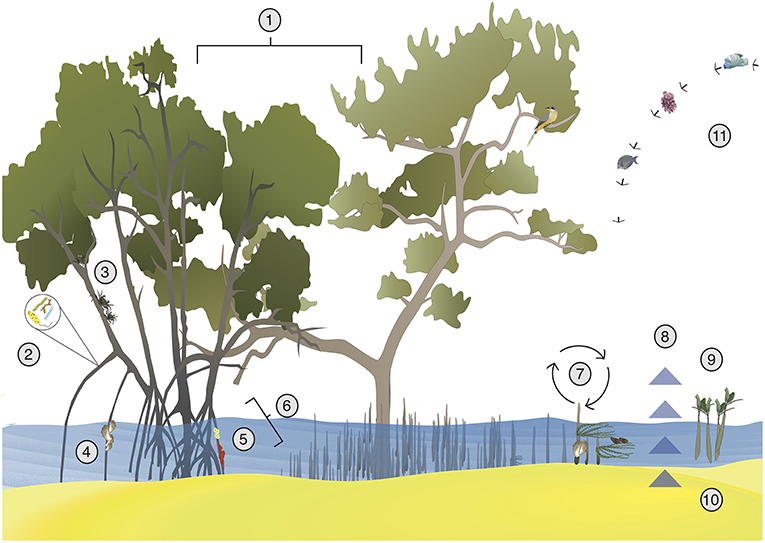Excerpt:
Mangroves are woody trees that can live on land or in the sea, and they are found in tropical and subtropical coastal regions. Because mangroves live along the land-ocean boundary, they are unique plants that provide several benefits to nature and humans…
Mangroves are shrubs or trees that form forests or small patches along tropical and subtropical shorelines. The word “mangrove” comes from the Guaraní word mangal which means “crooked tree.” [Guaraní is the language of the Guarani, one of the main divisions of the Tupi-Guarani language family and a national language of Paraguay. The plural of mangrove (“mangroves”) refers to the population or community composed of several individual mangroves of the same species or different species]. Mangroves are plants that live at the boundary between the land and the ocean [1]. For example, while most plants have roots that are entirely underground, mangroves have roots that are partially above ground, called aerial roots. Aerial roots serve as “snorkels” for breathing when the soil is flooded or has little oxygen. In addition, mangroves have salt glandule that allow them to remove sea salt through the pores of the leaves which is essential for living in seawater. Mangroves provide multiple benefits or ecosystem services to the marine and coastal species around them. Mangroves offer refuge for marine organisms, nursery areas for fish, feeding zones for land and water animals, and hurricane protection. Furthermore, mangroves efficiently filter out water pollutants from coastal waters.
When we think about forests on land, we easily picture big pines, grass, bears, and squirrels. Compared to coral reefs, for example, mangrove ecosystems have low biodiversity, but they still harbor a wide diversity of life, such as bacteria, birds, fish, turtles, and crustaceans like fiddler crabs. Some of these species have economic (shrimps, snapper, crabs, and others) and social importance (for example, biodiversity as cultural importance)…









